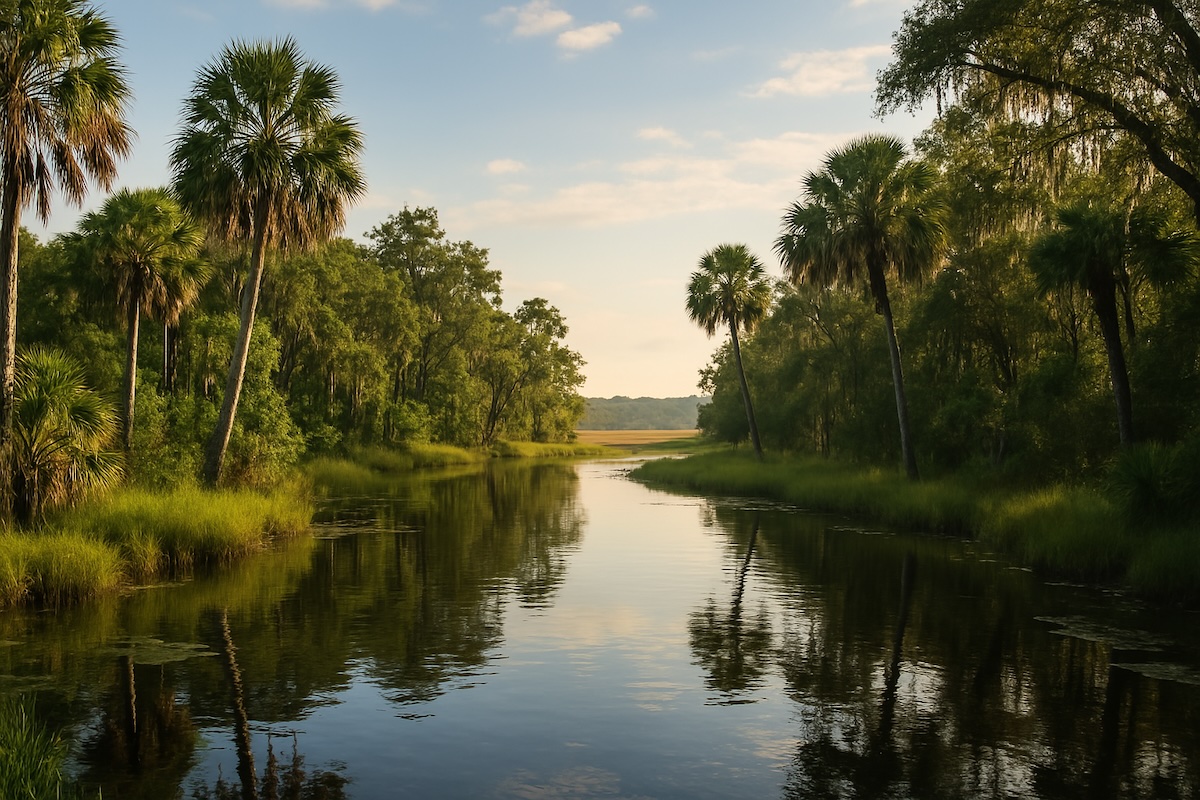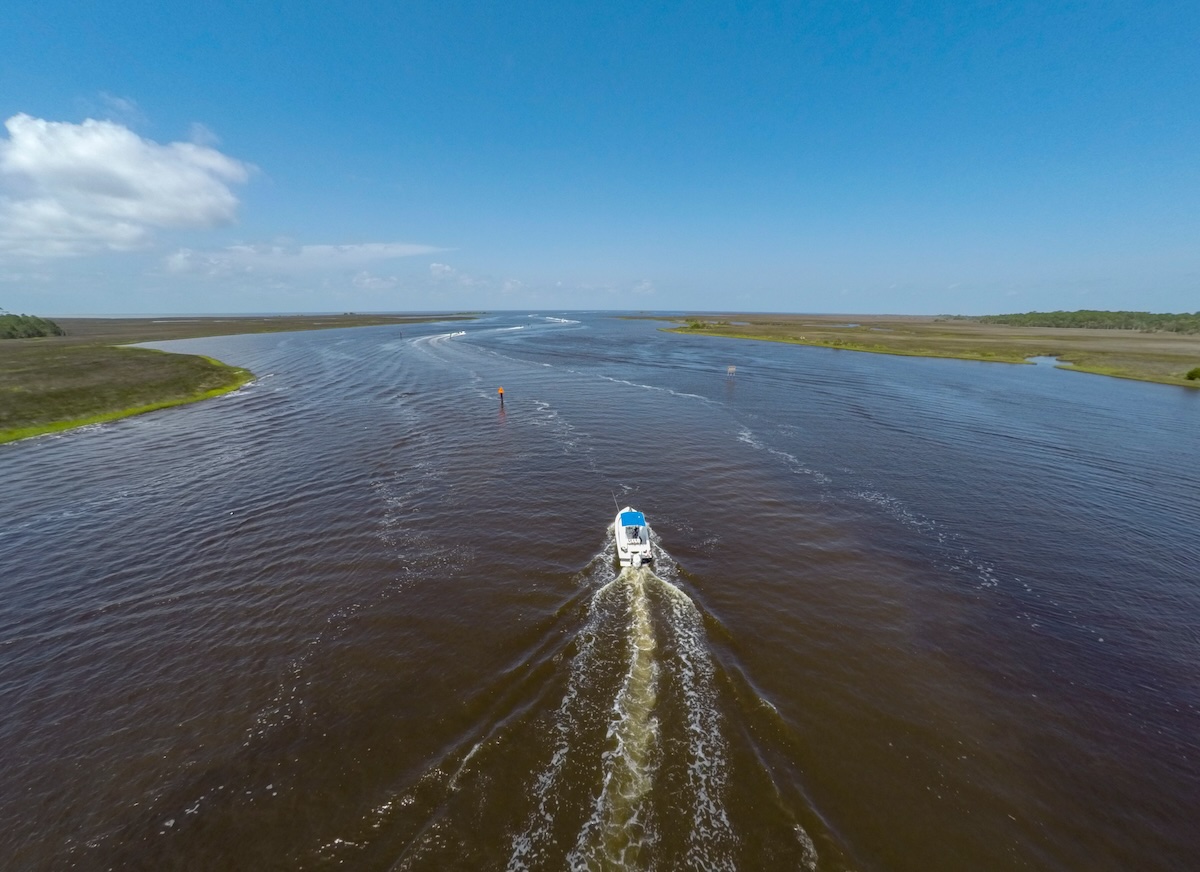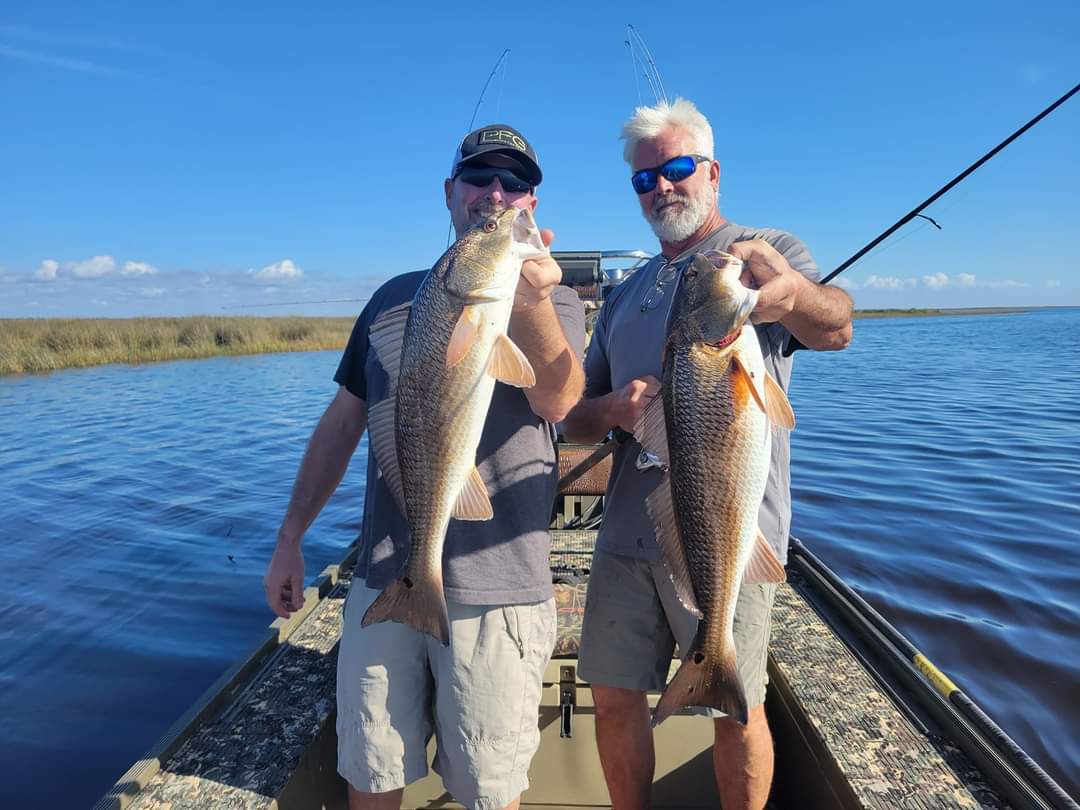North Florida offers a wide variety of fishing opportunities, but few places match the range and richness found near the Econfina River. Winding through forests, swamps, and marshlands before emptying into the Gulf of Mexico, the Econfina corridor supports both freshwater and saltwater ecosystems. Whether you’re casting for largemouth bass in a clear, spring-fed creek or poling across a shallow flat in search of redfish, this region provides access to some of the most productive and untouched fisheries in the state.
This guide covers both inland and coastal fishing zones, including species breakdowns, seasonal notes, and why the Econfina River system serves as an ideal jumping-off point for serious fishermen.
The Unique Setting of the Econfina River
Located along Florida’s Big Bend region, the Econfina River flows roughly 44 miles through Taylor County before reaching Apalachee Bay. Its upper stretches are spring-fed, providing cool, clear freshwater that supports an array of inland species. As the river approaches the Gulf, it transitions into brackish and then fully saline water, bordered by tidal creeks, mudflats, and grassbeds.
This natural blend allows for a wide range of species in a relatively compact area. Fishermen can easily shift between freshwater and saltwater targets without trailering to a new launch.

Best Freshwater Fishing Near the Econfina
1. Upper Econfina River (Spring-Fed Reaches)
Upstream from where the river broadens into tidal flow, the Econfina remains tight, clear, and cold due to a series of underground springs. These upper reaches are rich in vegetation and structure, making them a prime location for light tackle freshwater fishing.
Target Species:
-
Largemouth bass
-
Suwannee bass
-
Redbreast sunfish
-
Warmouth
-
Chain pickerel
Why It’s Productive: The clarity of the water allows for great sight fishing opportunities, especially during midday hours when the sun penetrates deep into the creek channels. The constant flow from the springs keeps temperatures stable year-round, encouraging consistent fish behavior.
Tactics:
-
For bass, try soft plastics or shallow-running crankbaits worked near submerged logs and overhanging brush.
-
Panfish hit small inline spinners and live worms, especially where the current slows near bends.
2. Tributary Creeks and Sloughs
Several small creeks flow into the Econfina, especially between the Fenholloway Wildlife Management Area and Econfina State Park. These are often overlooked but highly productive freshwater zones.
Target Species:
-
Bluegill
-
Shellcracker
-
Juvenile bass
-
Bowfin
Best Access: Most of these creeks are only reachable by kayak or small jon boat. During high water, these backwaters become fish highways, offering excellent topwater action along the edges.
Transition Zone: Where Fresh Meets Salt
3. Brackish Marsh and Upper Estuary
The Econfina’s middle section, where the river slows and spreads into wide flats and marshes, is a biologically rich brackish zone. The mixture of freshwater inflow and tidal influence makes this area attractive to species that tolerate or thrive in variable salinity.
Target Species:
-
Redfish
-
Snook (seasonally)
-
Striped bass (occasionally, especially in colder months)
-
Flounder
-
Mullet
When to Fish It: Spring and fall are the peak windows for this stretch. Baitfish migrate through, bringing game fish with them. On a falling tide, predators stack up at creek mouths and drop-offs.
Approach: Use shrimp under popping corks, weedless spoons, or swimbaits near oyster mounds and marsh edges. This is a great place to fish on foot, from a skiff, or even from a kayak.

Best Saltwater Fishing Near the Mouth
4. Apalachee Bay Grass Flats
As the river meets the Gulf, the surrounding coastline transforms into an open expanse of turtle grass beds, broken sandbars, and nearshore limestone bottom. This area is renowned for its inshore saltwater action.
Target Species:
-
Speckled trout
-
Redfish
-
Spanish mackerel (summer and fall)
-
Black drum
-
Tripletail (near crab buoys in late summer)
Water Conditions: The water here is generally clearer than most Gulf Coast systems due to the absence of heavy coastal development and the presence of spring-fed river systems. Sight fishing is not only possible but often preferred in the early morning when winds are calm.
Strategy:
-
Early in the day, drift the flats and cast soft plastic jerkbaits or topwaters across potholes and seams.
-
As the sun rises, focus on sandy edges near turtle grass.
-
For mackerel, troll flashy spoons just outside the flats.
5. Tidal Creeks and Coastal Marshes
To either side of the Econfina mouth are miles of winding creeks and unpressured marsh. These areas are ideal for fishermen who prefer solitude and shallow-water hunting.
Target Species:
-
Redfish (year-round)
-
Flounder (spring and fall)
-
Sheepshead (winter, around structure)
-
Juvenile tarpon (late summer in the back bays)
Key Advantage: This part of North Florida lacks the high boat traffic seen in more popular Gulf destinations. That allows fish to behave more naturally and makes the area forgiving for newer fishermen learning how to read the water.
Note: Tides play a major role here. Low tide exposes oyster bars and narrow channels, while high tide opens access to flooded grass where reds feed aggressively.
Fresh and Saltwater Fishing by Season
Fishing around the Econfina is productive year-round, but certain seasons bring specific strengths:
Spring:
-
Freshwater bass spawn.
-
Redfish and trout flood the flats.
-
Flounder begin staging along sandbars.
Summer:
-
Panfish action heats up in the springs.
-
Tripletail and Spanish mackerel arrive offshore.
-
Tarpon and juvenile snook show up in tidal creeks.
Fall:
-
Redfish school tightly and feed aggressively.
-
Speckled trout push shallow.
-
Cool fronts trigger freshwater bass into pre-winter feed mode.
Winter:
-
Sheepshead move to nearshore rocks and pilings.
-
Black drum and trout gather in deeper holes.
-
Freshwater action slows but remains steady in spring runs.
Boat Access and Launch Points
There are multiple access points to fish both the river and the coast without needing to travel far.
-
Econfina River State Park Ramp: Suitable for small boats, kayaks, and canoes. Offers access to both estuary and riverine sections.
-
Yates Creek Public Boat Ramp: Located a few miles to the west, this is a strong option for reaching coastal flats.
-
Rock Landing Marina (Panacea): A good launch for deeper-draft vessels and nearshore Gulf access.

Why This Area Stands Out
What makes the Econfina River region different from other fishing destinations in Florida is the balance of productivity, peace, and variety. You’re not limited to one fishery or one style. A single trip could include bass in the morning, a redfish on fly around noon, and trout on the flats before sunset.
The lack of commercial development keeps pressure low and water quality high. The surrounding state lands and wildlife management areas also mean that most shorelines remain wild and undeveloped, providing a scenic and authentic experience.
Make the Most of Your Time on the Water
The Econfina River region offers a rare combination of world-class fishing and natural beauty. From the quiet flow of its spring-fed headwaters to the rich inshore flats of Apalachee Bay, this area delivers some of the best freshwater and saltwater fishing in North Florida. Whether you are targeting bass at sunrise or stalking redfish across an afternoon tide, the variety of opportunities here keeps every trip rewarding.
Add in the remote setting, healthy ecosystems, and minimal boat traffic, and it becomes clear why so many fishermen return to this region again and again. The fishing is excellent, but the setting and pace of life on the water are just as valuable.
At Econfina Sporting Club, we help you experience it all. Our guided trips cover both freshwater and saltwater fisheries, led by professionals who know this area better than anyone. After a day on the water, relax in rustic luxury with comfortable lodging, quality food, and the kind of quiet that only comes from being surrounded by untouched wilderness.
If you are ready to fish, hunt, and relax in one of Florida’s last truly wild places, book your next trip with us at Econfina Sporting Club.


